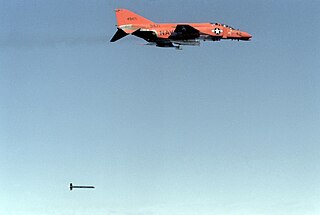An atlas is a collection of maps.
A pilot is a person who flies or navigates an aircraft.
Lift or LIFT may refer to:
Act, ACT, or The Act may refer to:
Dart or DART may refer to:
Short Brothers plc, usually referred to as Shorts or Short, is an aerospace company based in Belfast, Northern Ireland. Shorts was founded in 1908 in London, and was the first company in the world to make production aeroplanes. It was particularly notable for its flying boat designs manufactured into the 1950s.
Colt(s) or COLT may refer to:
The tiger(Panthera tigris) is the largest cat species.
The beaver is a large semiaquatic rodent.

A target tug is an aircraft which tows an unmanned drone, a fabric drogue or other kind of target, for the purposes of gun or missile target practice. Target tugs are often conversions of transport and utility aircraft, as well as obsolescent combat types. Some, such as the Miles Martinet, were specially designed for the role. It was, and is, a relatively hazardous job, as live fire is typically employed and the people doing the shooting are usually still in training.

The Short 330 is a small turboprop transport aircraft produced by Short Brothers. It seats up to 30 people and was relatively inexpensive and had low maintenance costs at the time of its introduction in 1976. The 330 was based on the SC.7 Skyvan. The C-23 Sherpa was a military version of the 330. Production of the aircraft ended in 1992, after 141 were produced. The Short 360 was a development of the Short 330.

The Short C-23 Sherpa is a small military transport aircraft built by Short Brothers. It was designed to operate from unpaved runways and make short takeoff and landings (STOL). It features a large squared fuselage with a full-width rear cargo door/ramp. The C-23A and C-23B are variants of the Short 330 and the C-23B+ is a variant of the Short 360. 60 aircraft were used it was finally retired from US service in 2014, but remains in international service. Although it was widely used for other uses it was originally the winner of an early 1980s competition for a light cargo aircraft to deliver cargo, especially aviation parts, for EDSA. While the C-23 was a new production, as was the C-23B, the C-23B+ were actually Shorts 360, with the tail and rear fuselage of a C-23. One of the differences between the C-23 and C-23B, is that the latter had cabin windows. The aircraft has a substantial amount of civilian use and also was operated by the U.S. Forestry Service and NASA for example. The NASA C-23 is still in service and used for research. The aircraft continues in service with the Philippines and Djibouti, as well as various civilian and governmental agencies, such as the aforementioned NASA research Sherpa.
A grasshopper is a common type of herbivorous insect.

Ground support equipment (GSE) is the support equipment found at an airport, usually on the apron, the servicing area by the terminal. This equipment is used to service the aircraft between flights. As the name suggests, ground support equipment is there to support the operations of aircraft whilst on the ground. The role of this equipment generally involves ground power operations, aircraft mobility, and cargo/passenger loading operations.

The Short SB.4 Sherpa was an experimental aircraft designed and produced by the British aircraft manufacturer Short Brothers. Only a single example was ever produced.

The Short Sturgeon was a planned British carrier-borne reconnaissance bomber whose development began during Second World War with the S.6/43 requirement for a high-performance torpedo bomber, which was later refined into the S.11/43 requirement which was won by the Sturgeon. With the end of the war in the Pacific production of the aircraft carriers from which the Sturgeon was intended to operate was suspended and the original reconnaissance bomber specification was cancelled.

The Waco CG-4 was the most widely used American troop/cargo military glider of World War II. It was designated the CG-4A by the United States Army Air Forces, and given the service name Hadrian by the British.
This page is based on this
Wikipedia article Text is available under the
CC BY-SA 4.0 license; additional terms may apply.
Images, videos and audio are available under their respective licenses.






